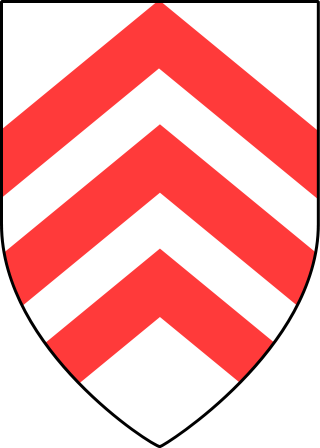The 10th Infantry Division was created in October 1934 under the cover name Wehrgauleitung Regensburg to hide its violation of the Treaty of Versailles. It was renamed the 10th Infantry Division when the establishment of the Wehrmacht was announced publicly in October 1935.
The 1st Infantry Division was an infantry division that notably served in World War II as part of the Heer of Nazi Germany's Wehrmacht. It had been one of the original infantry divisions of the Reichswehr.

The 334th Infantry Division was a German Army infantry division in World War II. Originally formed in November 1942, it surrendered to the Allies at the conclusion of the Tunisian Campaign in May 1943. The division was reconstituted on 3 June 1943 in France within the 1st Army, with the staff of the 80th Infantry Division as well as remnants of the old division and replacement units. It spent the remainder of the war serving on the Italian Front.

The 3rd Mountain Division was a formation of the German Wehrmacht during World War II. It was created from the Austrian Army's 5th and 7th Divisions following the Anschluss in 1938.

The 1st Mountain Division was an elite formation of the German Wehrmacht during World War II, and is remembered for its involvement in multiple large-scale war crimes. It was created on 9 April 1938 in Garmisch Partenkirchen from the Mountain Brigade which was itself formed on 1 June 1935.
German Division Nr. 188 was raised in late 1939. It consisted of the 136th, 138th and 139th Mountain Replacement Regiments and the 112th Artillery Replacement Regiment, plus supporting units. It began the war on border guard duty in the mountainous region between Austria and Yugoslavia with the primary mission of training reservists and replacements for the regular mountain divisions. In the spring of 1941 it joined the invasion of Yugoslavia, with the three mountain regiments given responsibility of seizing control of Carniola and Carinthia on the Yugoslav side of the border, which they carried out quickly and effectively against little to no resistance.

The German 20th Infantry Division was an infantry division of Nazi Germany.

The 5th Mountain Division was a formation of the German Wehrmacht during World War II. It was established in the Wehrkreis XVIII in October 1940, out of units taken from the 1st Mountain Division and the 10th Infantry Division. The unit surrendered to the U.S. Army near Turin in May 1945.

The 6th Mountain Division was a German army Division of World War II. It was established in June 1940, and was deployed to France for occupation duties. In December it was relocated to Poland, where it remained until the spring of 1941. Having formed XVIII Mountain Corps with the 5th Mountain Division, it then took part in Operation Marita, the invasion of Greece during the Balkans Campaign. In September it was relocated to northern Finland, where it operated in Lapland. From July 1942 onward it was part of the 20th Mountain Army along the Arctic coast. It withdrew into Norway when the Germans evacuated Finland in late 1944, and surrendered to the British at the end of the war in 1945.

The German 5th Infantry Division was formed in October 1934 and mobilized on 25 August 1939. The division's troops were garrisoned in Konstanz, Ulm, and Freiburg. When formed, the division consisted of the 1st, 2nd, and 3rd battalions of the 14th, 56th, and 75th Infantry Regiments, the 1st, 2nd, and 3rd Battalions of the 5th Artillery Regiment, the 1st battalion of the 41st Artillery Regiment, and assorted 5th Division support units.

The 6th Infantry Division was a unit of the German Army during World War II.
XVIII. Armeekorps was formed in Salzburg, Austria, on 1 April 1938, following the Anschluss of Austria into the German Reich. During the life of the XVIII. Armeekorps, they took part in the Polish campaign, Fall Weiss, and the campaign in the West 1940, and performed occupation duties in France. On 30 October 1940, the Corps gave up some elements to newly forming XXXXIX. Gebirgskorps, and on 1 November, they re-designated the Korps name to XVIII. Gebirgskorps, under which it participated to Operation Marita, the invasion of Greece in spring 1941.
The 21st Infantry Division was a German military unit which fought during World War II.

The 15th Infantry Division was an infantry division of the German Army during the interwar period and World War II, active from 1934 to 1945.

Paul Klatt was a German general who commanded the 3rd Mountain Division during World War II. He was a recipient of the Knight's Cross of the Iron Cross with Oak Leaves of Nazi Germany.
Hermann Kreß was a German Generalleutnant during World War II who commanded the 4th Mountain Division.

The 96th Infantry Division was a German division deployed during World War II. It was formed on 25 September 1939 in Bergen as part of the 5th wave (aufstellungswelle).

The 134th Infantry Division was a German division in World War II. It was formed in October 1940.
The 137th Infantry Division was a major fighting formation of the German Army (Wehrmacht). It was created in October 1940, and first saw combat in Operation Barbarossa as part of Army Group Centre. The division remained on the central sector of the Eastern Front, where it participated in heavy fighting.

Franz Pöschl was an Oberstleutnant in the Wehrmacht of the Greater German Reich during the Second World War and was awarded the Knights Cross of the Iron Cross on 23 February 1944 for extraordinary heroism during the Battle of Monte Cassino. His last duty assignment in the Wehrmacht was as the Regimental Commander of Gebirgsjäger-Regiment 143.













